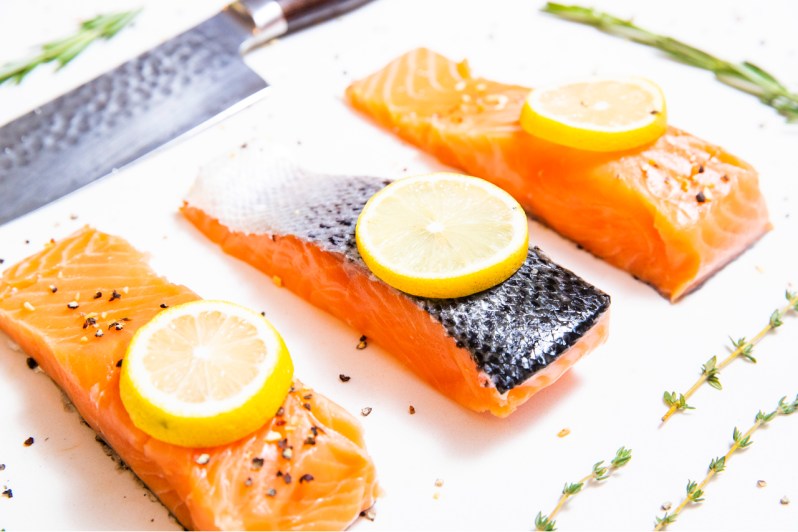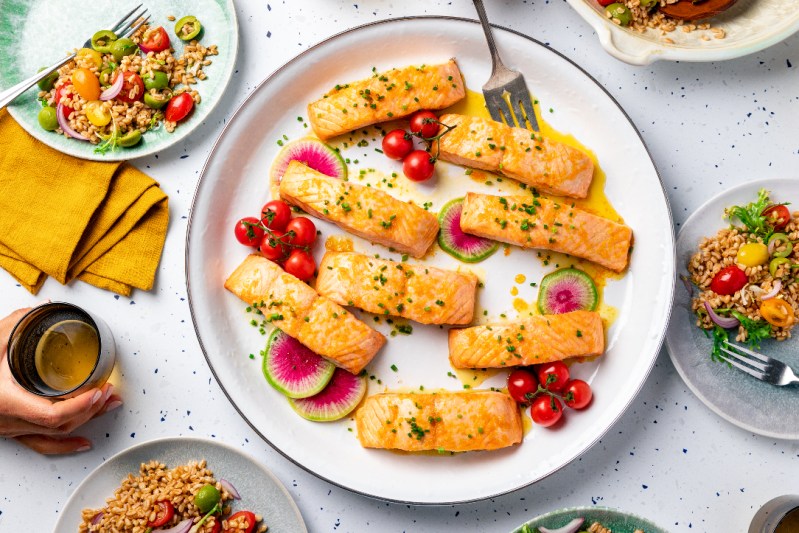
A tasty and versatile fish, salmon’s popularity is undeniable. Delicious raw in sashimi or cooked on the grill, this oily fish is also supremely healthy. Packed with protein and omega-3 fatty acids, salmon is one of the best foods to eat for a healthy diet.
Here to help guide The Manual through this great fish is Secret Island, a seafood company that specializes in sustainable, flash-frozen salmon from Chile. From sustainably farmed Chilean salmon to wild-caught Pacific sockeye, there are plenty of options for the health-conscious consumer looking to add more salmon to their diet.
Salmon nutritional benefits

According to dietitian nutritionist Kristy Del Coro, while all fish are excellent sources of nutrients, salmon is particularly great when it comes to polyunsaturated fats, including omega-3 fatty acids, critical factors for heart health. As a bonus, omega-3 acids are also anti-inflammatory and great for brain development. Salmon is considered a fatty fish and contains far more omega-3 acids than other fish like sole, sea bass, and cod. While these fish are healthy, they don’t pack the same level of omega-3s as salmon.
Rich in vitamins, salmon is also a great source of Vitamin D, which is essential for bone health. Del Coro states that just 3 ounces of salmon are enough for 50% of daily Vitamin D intake. However, one health benefit that isn’t as well-known regarding salmon is something called astaxanthin, an antioxidant believed to reduce inflammation and help slow down the brain’s aging. Astaxanthin is a carotenoid, a family of pigments that’s responsible for the orange color of sweet potatoes and carrots.
“Many people may be wary when they see ‘color added’ to farmed salmon,” Del Coro said. “But actually, this color comes from the astaxanthin, which is added to the fish food and is not harmful to health; it is actually beneficial!”
But what about the different species of salmon or farmed versus wild? Del Coro states that while some types of salmon have different levels of fat and vitamins, all types of salmon will contain a high level of nutrients and similar health benefits. And when it comes to farmed versus wild, farmed salmon generally have higher fat content than wild salmon. These differences actually come down to the salmon’s diet and activity. The most important thing is to discern how the fish was raised or harvested. From a sustainability standpoint, buyers should consult BAP (Best Aquaculture Practices) for farmed salmon and MSC (Marine Stewardship Council) for wild salmon.
Salmon cooking tips

An incredibly diverse fish, salmon is great in a variety of preparations. In fact, some of the tastiest ways are often the easiest. According to Chef Janine Booth and Chef Jeff McInnis, Secret Island Salmon Chef Ambassadors, one of the best methods is to break out the air fryer.
“The quickest and simplest of these would be in the air fryer,” said Chef McInnis. “Set to 400 F, season your salmon, place the skin side down for 6-7 minutes, and enjoy!
In terms of seasoning, Chef Booth and Chef McInnis recommend everything from a simple combination of olive oil, salt, and pepper to flavor-packed spice blends or fragrant herbs like dill, parsley, sliced shallots, or onions. To make excellent poached salmon, Chef Booth and Chef McInnis like to cook salmon in a broth with herbs and lemon slices. Simply simmer the fish in broth for 10-12 minutes and serve the tender fish with pasta or vegetables. But for something spicier, they recommend berbere spice. This Ethiopian spice mix combines ginger, paprika, garlic, fenugreek, cardamom, chili pepper, and black pepper.
Finally, regarding raw salmon, a properly sourced, high-quality fish is perfectly nutritious to eat raw. One thing to pay attention to for raw salmon is the increased risk of foodborne illnesses and parasites. These issues can result from the salmon’s environment or something picked up during shipping and handling. To avoid this, cook your salmon to an internal temperature of 145 degrees F. But if you insist on eating your salmon raw, the best way to avoid any issues is to source high-quality fish.



